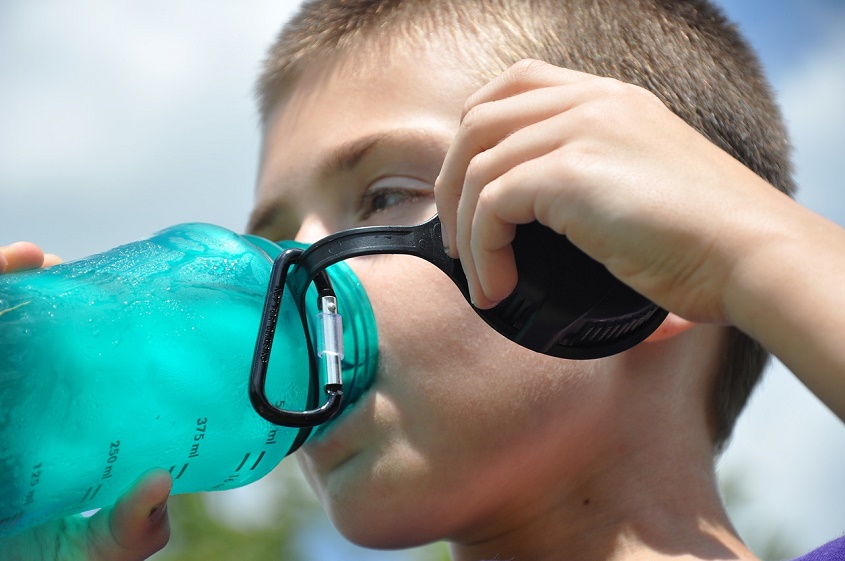Clean drinking water should be a given in every home. That’s why millions of households have installed countertop reverse osmosis system to help with water treatment.
Why reverse osmosis?
Reverse osmosis is one of the most reliable, effective, and efficient water filtration methods. It helps remove almost all contaminants from your drinking water, produces great-tasting water, and is environment-friendly.
Is it worth it? We’ve discussed the advantages and disadvantages of the reverse osmosis water treatment method to help you get the right answer to this question. So, read through to the end.
We understand that with pros come cons. After going through this website, you should be able to tell whether treating your water through reverse osmosis is worth it.
What is Reverse Osmosis Water Treatment?
Reverse osmosis water treatment removes contaminants from water through several filtration stages, including a semi-permeable membrane.
The semi-permeable membrane is what sets this water treatment method apart from others. It eliminates the most stubborn water impurities that other water filtration methods cannot remove.
How Does RO Water Filtration Work?
During reverse osmosis, water is forced under high pressure through the semi-permeable membrane, which has tiny pores (0.0001 microns).
Particles larger than 0.0001 microns, which can include sediment, lead, and fluoride, are left on one side of the membrane as water passes through.
The pollutants are then flushed down the drain together with wastewater.
Advantages of Reverse Osmosis
If you get a reverse osmosis system for your home, you’ll enjoy the benefits listed below:
Removes Most Contaminants
Reverse osmosis systems remove up to 99.99% of contaminants from drinking water. Some of the impurities removed include nitrates, arsenic, lead, sulfates, and bacteria, among others.
In fact, the Environmental Protection Authority cites reverse osmosis as one of the most effective methods of eliminating all disease-causing organisms and chemical contaminants.
Requires Less Maintenance
After installing a reverse osmosis system, all you need to do is keep up with filter changes. Most RO systems’ filters last for 1 year, meaning that you’ll change the filters only once per year.
The RO membrane can last for up to 3 years.
Changing the filters in a reverse osmosis system is easy and takes just a few minutes. You also don’t need to be a professional to complete the task.
Improves Taste and Odor
Contaminants affect the taste, color, and smell of your drinking water. For instance, pesticides, herbicides, chlorine, and fluoride give water a nasty chemical taste.
Iron gives the water a metallic taste and sulfur the taste of rotten eggs.
Reverse osmosis eliminates these contaminants giving the water a great taste. It allows you to enjoy pure-tasting water from the comfort of your home at any time.
Provides Better Water for Cooking
Odors and tastes in your cooking water translate to more odors and tastes in the meals you prepare.
Make chicken soup or pasta with reverse osmosis water, and your soup will have the delicious taste of the herbs and spices you added to the soup. That’s just how great RO water is.
Gourmet coffee will have all the intended flavor and not unpleasant bitterness and aftertaste.
In fact, most restaurants have started using RO water to prepare ingredients and cook to improve the taste of their delicacies.
Encourages Drinking More Water
Reverse osmosis water is fresh and free of nasty tastes and odor. It’s therefore great-tasting, the reason why most people get more inclined to drink it when thirsty.
Drinking enough water keeps you hydrated, which benefits your skin’s health.
If your water tastes great, you’ll find that your loved ones will take more of it and less sugary drinks like soda.
There’s nothing as satisfying to a parent as seeing their children drinking more water and shying away from flavored drinks.
Super Convenient
What could be easier than walking up to your kitchen sink and filling your glass with clean water in seconds?
Think of bottled water. You have to carry it to the kitchen and make room for it in the fridge for storage. And after a few days, you’ll repeat the same process. Quite tiring, right?
Then you get unexpected visitors only to realize that the water you have in the fridge isn’t enough! Frustrating, right?
A reverse osmosis system gives you unlimited access to pure water. You don’t have to worry about occasional guests that show up uninvited.
Cost-Effective
Although reverse osmosis systems come with a high price tag, they are cheaper in the long run. You’ll be drinking water straight from the tank rather than paying for bottled water every now and then.
With bottled water, you’ll keep spending money on refills. And if you have a large family, the cost will add up pretty fast.
Get a reverse osmosis system, and you’ll only pay for the unit once. The next payments will be during filter replacement, which happens once or twice a year – and it’s not that much.
Variety of Options
Reverse osmosis systems are available in a variety of options for you to choose from. Whether you want a whole-house unit, a tank-based or tankless unit, or a counter system, you can do it easily on the market.
All you need to do is identify the model that best suits your family size, budget, and needs.
Disadvantages of Reverse Osmosis
Despite all the benefits listed above, reverse osmosis isn’t without drawbacks. We’ve listed the cons of this water treatment method that you need to know before purchasing an RO system.
Wastes a lot of Water
With reverse osmosis water filtration, comes wastewater. No matter the RO system you go for, some of your water will go down the drain.
In fact, there’s no way to prevent wastewater with this water filtration method.
And although some units claim to be zero waste, they are not. They still produce the wastewater, only that it’s recycled for other purposes like mopping the floor, washing cars, watering plants, etc.
Most traditional reverse osmosis systems waste 4 gallons for every gallon of water. Luckily enough, modern systems are more efficient.
You can easily find a system that wastes only a gallon for every 2 or 3 gallons of pure water produced.
Removes Healthy Minerals
One of the major disadvantages of reverse osmosis is that removing contaminants from water eliminates essential minerals.
Minerals like magnesium and calcium help balance the pH of your water. They also make the water tasty.
However, the good news is that some systems come with an extra remineralization stage that restores the minerals in your drinking water. These systems are pricier and will cost you more money in maintenance.
Clogging
Reverse osmosis membranes have tiny pores (about 0.0001 microns) and can thus get easily clogged by impurities. The more contaminated your home water is, the faster the membrane will become clogged.
Clogging affects your water flow and can lead to several disadvantages, including low production rate and more wastewater.
Slower Filtration Process
Reverse osmosis systems filter water in a number of stages, meaning that you won’t get instant access to clean tap water.
Tankless systems, which are becoming popular by the day, take a few seconds to produce contaminant-free, pure, safe, and healthy water.
Although some systems come with storage tanks that solve this issue, they tend to take up a lot of space. The tanks also increase the risk of secondary pollution.
Might Require Electricity
Although most RO systems don’t require electricity to operate, there are those like countertop models that can’t run without it.
Since these systems can’t use water pressure to filter water, they use electricity to push the water through the system.
Conclusion
Reverse osmosis water treatment is one of the best methods of filtering water. And from the many advantages discussed above, we can say that choosing the method to filter your household’s water would be a smart decision.
However, since the decision is yours to make, think about what you want for your home and your budget. If you feel that an RO system is worth going for, visit any online shop, and you might find the right fit.








